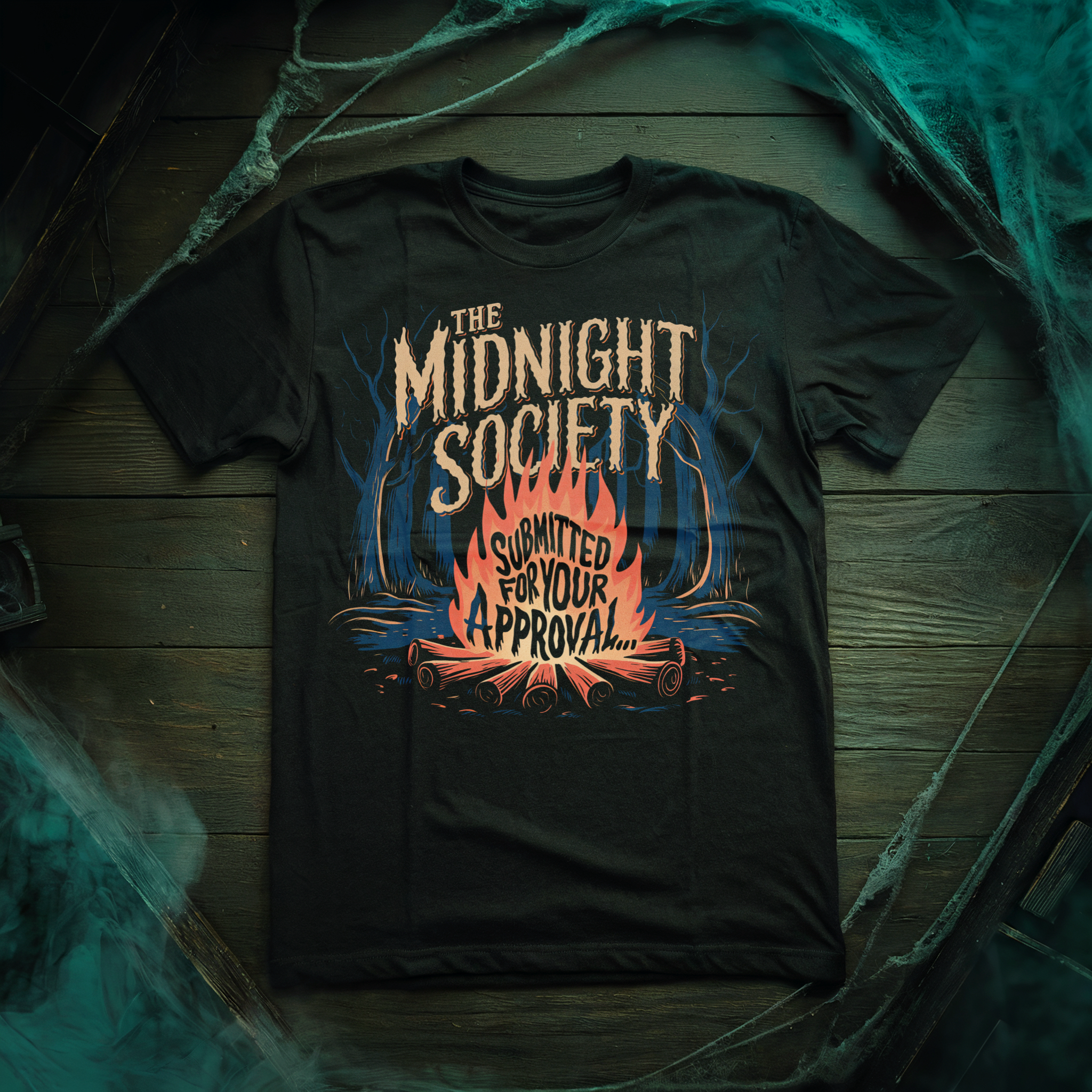There is a multitude of meaning to the lyrics “Mama, just killed a man” when Freddie Mercury coos them through speaker. They can be melodically allegorical or a matter-of-fact confessional. Metaphorical or not, we can’t help but wonder: Will his mother forgive him for whatever it is that he has done? If your son killed someone, intentionally pulling the trigger, would you forgive him? What if his murderous tendencies were so insatiable you had to lock him away from the world, would you still forgive him? If you had the resources, would you try to change him at all costs even if they were unethical?
Chelsea Stardust’s All That We Destroy, Blumhouse’s eighth episode installment to Hulu’s exclusive 12-month horror anthology series Into The Dark, paints a modern portrait of a loving mother and flawed son covered by a dark, black, slimy layer of guilt and fear just in time for Mother’s Day.

Written by Sean Keller and Jim Agnew, All That We Destroy is packed with a talented, horror-friendly cast including Samantha Mathis (The Clovehitch Killer), Israel Broussard (Happy Death Day), Frank Whaley (Vacancy), and Dora Madison Burge (Friday Night Lights). The episode’s premise, dedicated to the celebration of Mother’s Day, revolves around a mother, her son, the present women in his life, and an absent father. Victoria, played by an experienced Mathis, is an esteemed geneticist breaking ground on cloning custom human organs. Spencer, her young adult son expertly played by Broussard, is creative, but shy.
They exist in an isolated home where Victoria rebirths the same young woman, Ashley, to interact with Spencer each day in a private laboratory. In her scientific and emotional attempts, Victoria is trying to veer her son against his natural impulse to kill. When a real, bubbly personality begins to engage with the rebellious and dangerous Spencer and Ashley’s clone begins to recount her personal memories, Victoria is thrown into a heightened dilemma reaching far beyond nature versus nurture: affect versus ethics.
When we draw on inspiration of nurturing and sacrifice – we conjure the image of the woman who gave us life. Because of our mothers, we are shaped into the people we are today. All That We Destroy successfully aims to please the generic motherly tropes associated within the horror genre, but reveals a more sinister problem one mother must cope with and fight against. With a little advanced experimentation and added affection, the episode manages to skew the typical, expected results by creating and harvesting the opposition to a synthetic relationship between mother and son.
Patient Experimentation
The overprotective, over caring, obsessive mother son relationship arc has been done a thousand times over throughout the horror genre. We’ve been exposed to the horrors a man may commit when his psyche is controlled by the woman who gave him life. All That We Destroy chooses to experiment with a different dynamic, one that is not only more realistic, but also just a threatening as the negative counterpart. Victoria loves her son wholeheartedly, (naturally,) and will do anything to keep him from becoming the monster he was born to be. It’s a modern way of looking at the space, feelings, and emotion shared between a desperate mother and her helplessly flawed sign.
While it looks at the common initial plot point of how far a loving mother will go, this episode smartly incorporates authentic responses from Victoria and from Spencer, respectively. Expertly paced to match Victoria’s endearing, motherly patience, All That We Destroy creates a meaningful narrative filled with intriguing entertainment and applicable analytical elements. It really is a story for any general audience to enjoy, whether they look to see how Victoria‘s experiment unfolds, or wish to go deeper into the dark corners of a complex relationship between mother and son.
Stardust adds valuable variables to the episode’s style and focus with her unique display of digitized imagery and relevant contemporary details. As a geneticist, Victoria is intelligent and patient with re-trying the experimented environment she has placed Spencer in to wean him from his sociopathic impulses. The tone, atmosphere, and setting are all tailored to a clean sterile feel. The contrast to that of a warm, maternal home is not only brilliant, but also calls the nature-versus-nurture debate into play. Like her, All That We Destroy dares viewers to wonder why Spencer is the way that he is and if there is a way to fix him, how?
Instead of taking the easy way out and creating a monster from a monster, we can’t help but sympathize with this intelligent woman putting her brain and resources on the table to cure her son of every mother‘s worst nightmare. I won’t give the experiments endgame away, but I will praise All That We Destroy for testing a more modern relationship revolving around a psychological problem that unfortunately exists within human men and women regardless of how much or how little their mother loves them. The variables added by Stardust only alter the results to the episode’s advantage.
Affectionate Advancements
In addition to the tone and incorporation of digital methods for communicating as well as visualizing, Stardust utilizes a variety of her experimental variables as tools to heighten the intrigue of All That We Destroy. The flashback sequences, especially those of Ashley developing and recalling her memories of the past, are so haunting, unique, and well done – I have to applaud this novice director for pure restraint in keeping the narrative from becoming disorienting or confusing. They are unique and almost beautifully disembodying as Ashley pieces her existence together in front of her own eyes. The subtle details that are manipulated overtime are done so keenly and confidently that the plot moves along and makes way for a really interesting solution to Spencer’s problem.
All That We Destroy lends itself to a higher thinking audience as it breaks down the troop of motherhood as well as female and individual identities. As we see in a more modern horror world, an audience craves a story that can be unpacked. Stardust, Keller, and Agnew all form a strong team behind a simple premise and allow it to be more with precision and expertise. As we see Victoria almost to groom a perfect specimen for her son to enjoy, and not kill, we’re being exposed to a common social problem facing today’s women who are constantly forced into desired norms, rolls, positions, and even relationships.
Without making Victoria‘s home lab and incredible experimentation to unbelievable, I thought All That We Destroy housed a pretty believable facility complete with a dark black ooze encapsulating the clones Victoria produces. All of the imagery, down to Spencer’s sketches had an air of creativity, progress, and an odd touch of ‘clean slate’ appearances. The visuals certainly kept up with the intelligence of the storyline. It’s obvious that each factor of the episode is born of intention and affection.
Nonfatal Flaws
There is little to find in all that we destroy that is detrimental to it as a whole episode. Due to some repetition in Spencer’s murderous transgressions, the second and third act serve to be more of a slow burn operation rather than a suspenseful thriller. There is very little action, but the consequences of Spencer’s impulsive reactions are pretty violent. When we reach the end, the last few scenes are a little anticlimactic compared to the episode’s hushed tone of impending doom. It is wrapped neatly within itself, but could have increased the level of nefarious horror one or two notches above the average scale it sat on. However, I respect and except all of these minor negatives as they all serve the purpose of Spencer’s character. His murdering behavior of choice is intimate and slow, an exceptional treat for the personality of that role. The lack of action in All That We Destroy is quickly made up in the appropriate, twisted last scene that keeps Victoria‘s determined motherly momentum going.
“All That We Destroy reconstructs a modern-day woman to play both the hero and the villain while successfully proving that a mother’s love never dies.”
The black ooze of this mother’s artificial womb gives birth to both the mistake and the solution regarding her son’s potentially normal existence. Victoria harnesses all of the power of a caring, nurturing, knowledgeable mother. Her heart and emotions are lovingly portrayed and directed by a true fan of horror who knows that content style and meaning are the most valuable deliverables when we delve into the genre’s popular points of satisfaction. Chelsea Stardust, as well as writers Sean Keller and Jim Agnew, have created an exceptional chapter of what to expect when dabbling in the complexities of motherhood and horror. All That We Destroy reconstructs a modern-day woman to play both the hero and the villain while successfully proving that a mother’s love never dies.
Do you plan to stream All That We Destroy? Is Victoria’s experiment with her son justifiable? What do you think the outcome will be? Share your thoughts on Into The Dark’s May episode over on Twitter, Reddit, or in the Horror Movie Fiend Club on Facebook!





![all that we destroy hulu e1556766321307 [Review] INTO THE DARK: ALL THAT WE DESTROY Experiments With Modern Motherhood 10 all that we destroy hulu](https://nofspodcast.com/wp-content/uploads/2019/05/all-that-we-destroy-hulu-e1556766321307.jpg)



